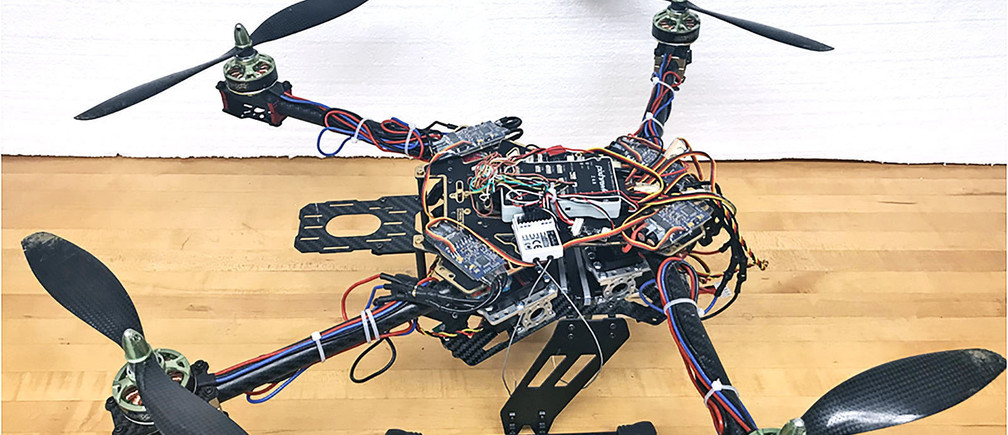Insect wings inspire drone that can handle serious wind

Most drones are not able to withstand wind because of their fixed-arm design. Image: Purdue
A drone delivery is great—on a perfect, sunny day. But what about when it’s windy? Most drones are not able to withstand wind because of their fixed-arm design.
“Our drone design was inspired by the wings and flight patterns of insects,” says Xiumin Diao, an assistant professor in the School of Engineering Technology at Purdue University. “We created a drone design with automatic folding arms that can make in-flight adjustments.”
Diao says the design provides drones with improved stability in windy conditions because the folding arms can move and change the center of gravity of the device during flight. He says the design also makes drones more energy efficient because the movable-arm technology allows for the use of the full range of rotor thrust.

“The drones on the market now have fixed arms and that greatly reduces their maximum payload capacity when the payload is offset their center of gravity,” Diao says.
“Our design allows a larger payload because the movable arms can liberate part of rotor thrust to fight the weight on the overall device.”
Diao says the foldable arms also can help in search-and-rescue operations using drones because they can more effectively navigate the air conditions in ravaged areas and morph by moving the arms to go through narrow spaces.
Investors poured more than $700 million into the drone industry in 2018 as demand increased in military, government, and consumer markets.
A paper on the drone design appears in the ASME Journal of Dynamic Systems, Measurement and Control. Diao worked with the Purdue Office of Technology Commercialization to patent his device. They are looking for additional researchers and partners to license the technology.
Don't miss any update on this topic
Create a free account and access your personalized content collection with our latest publications and analyses.
License and Republishing
World Economic Forum articles may be republished in accordance with the Creative Commons Attribution-NonCommercial-NoDerivatives 4.0 International Public License, and in accordance with our Terms of Use.
The views expressed in this article are those of the author alone and not the World Economic Forum.
The Agenda Weekly
A weekly update of the most important issues driving the global agenda
You can unsubscribe at any time using the link in our emails. For more details, review our privacy policy.
